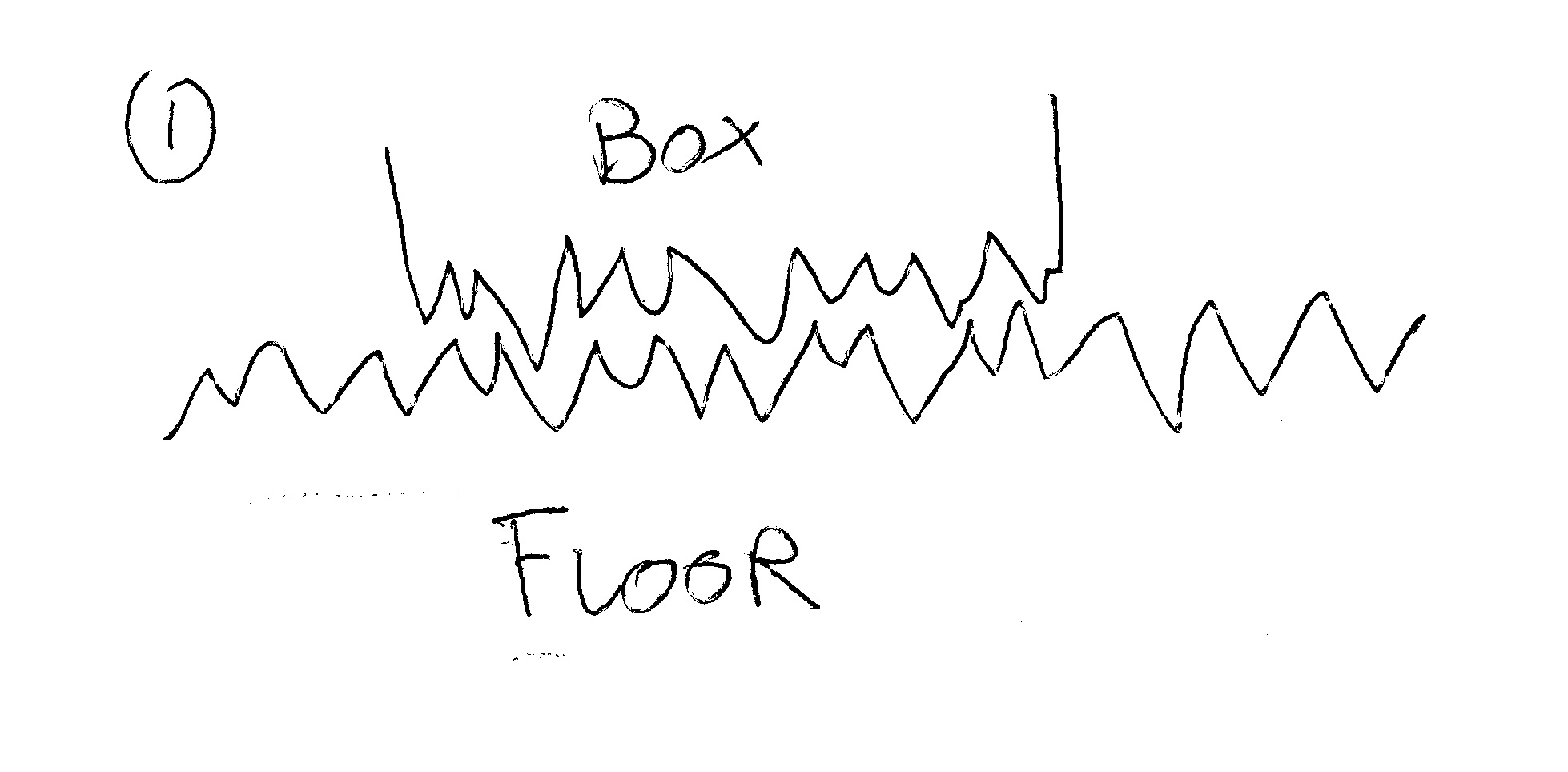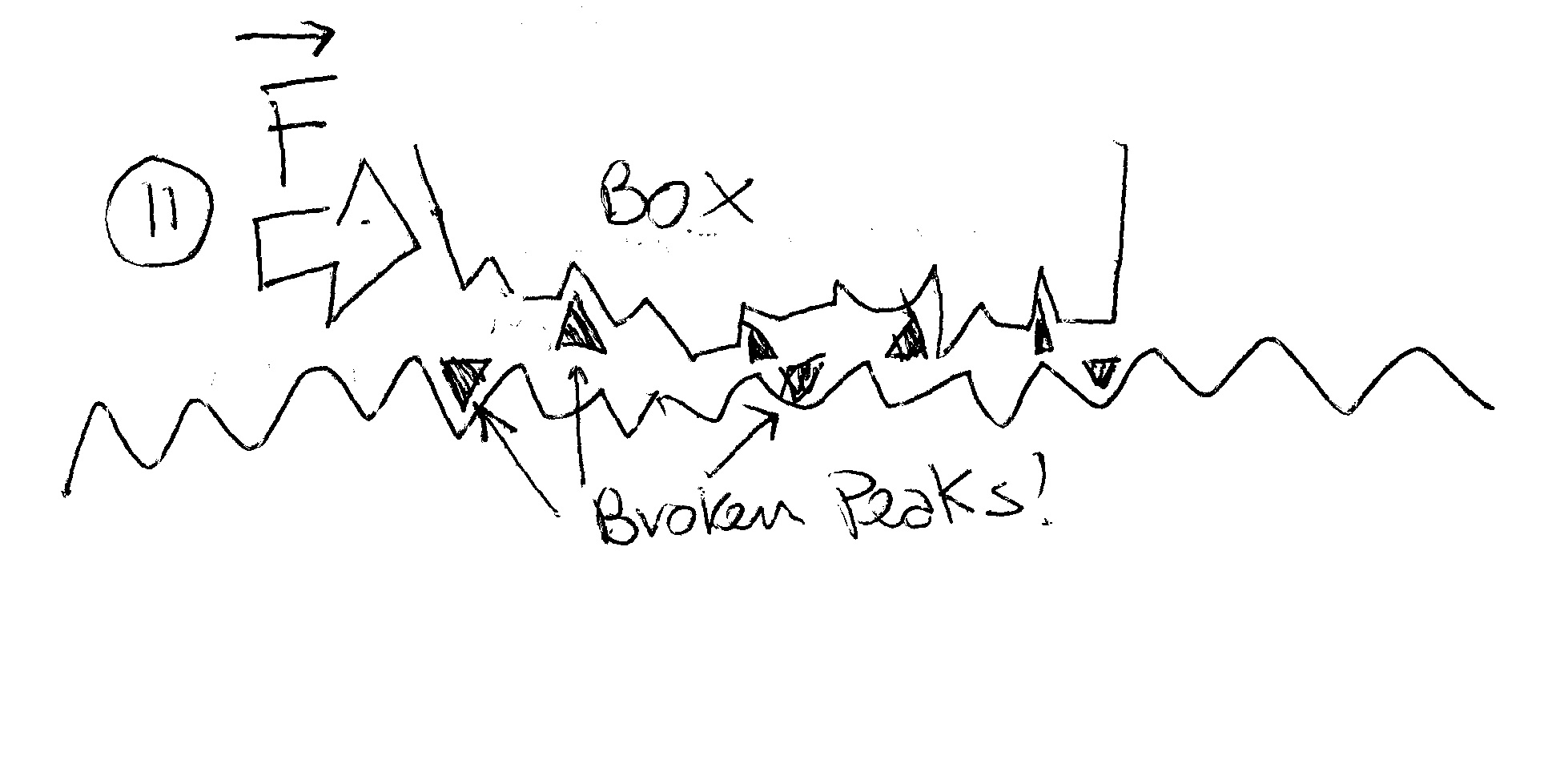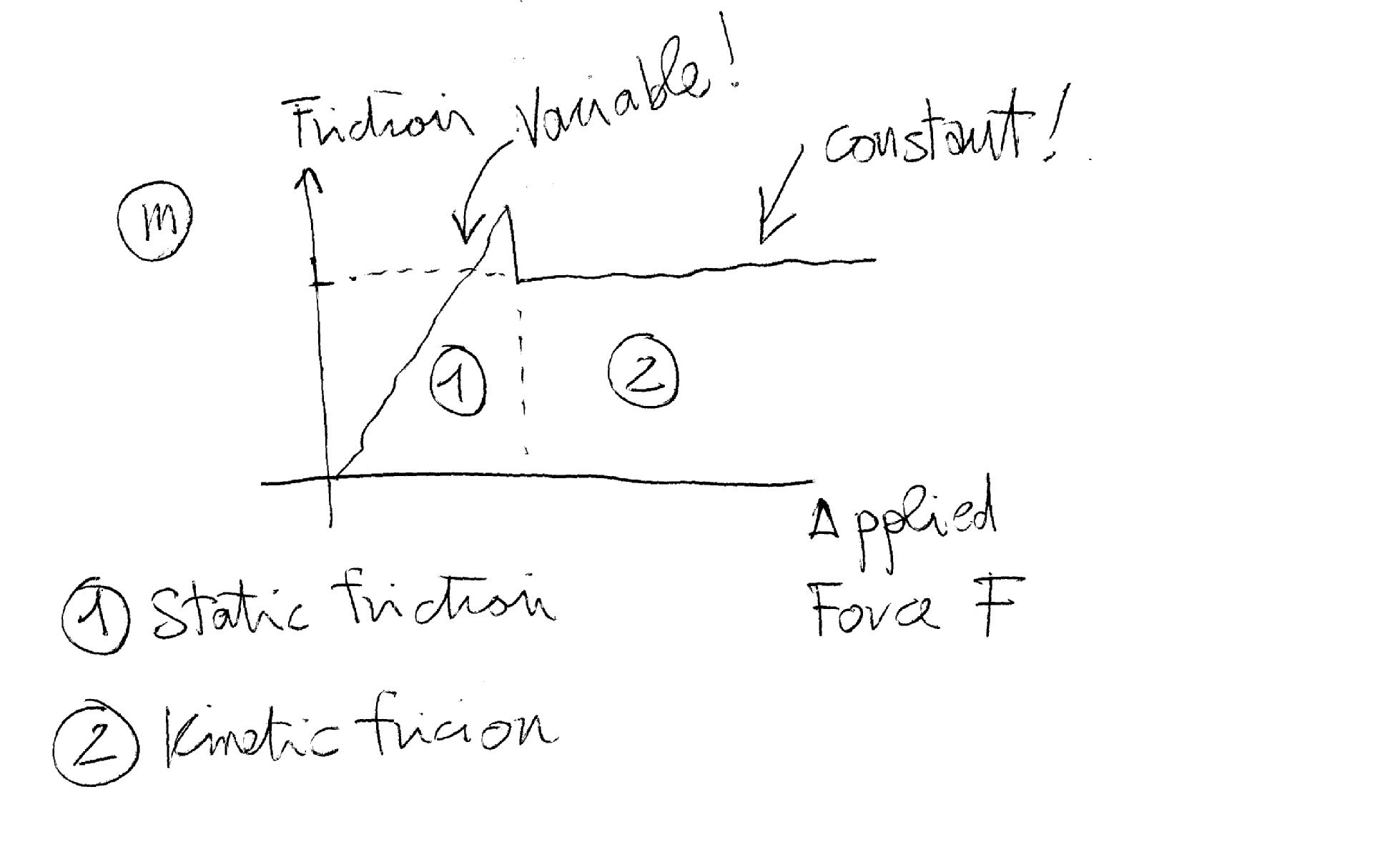How does static friction differ from kinetic friction?
1 Answer
Static friction refers to the opposition that a still object opposes to a force applied on it. Kinetic friction refers to the opposition to the force applied to an object while moving.
Explanation:
The difference is a little bit difficult to spot immediately but consider this:
imagine a box at rest on the floor. The area of contact of the surface of the box and the floor looks like this:

You can see that at a microscopic level there are a lot of "peaks" and "valley" that stick together (this means opposition to movement!).
Now when you apply a force to the box these "connections" between peaks and valley oppose the motion of the object. If you increase the applied force you start to break the peaks and fill with the debris the valleys! Yet the object doesn’t move BUT you are starting to change the situation!

At a certain point the motion starts and the surface of your box is microscopically levelled, so that now motion can go on without changing the applied force!!!
Graphically you can see that static friction "adapts" itself to the applied force balancing it until it reaches a maxim value after which the object starts to move and friction (kinetic) stays almost constant.

The relationships describing the two types of friction (relating friction with a coefficient

